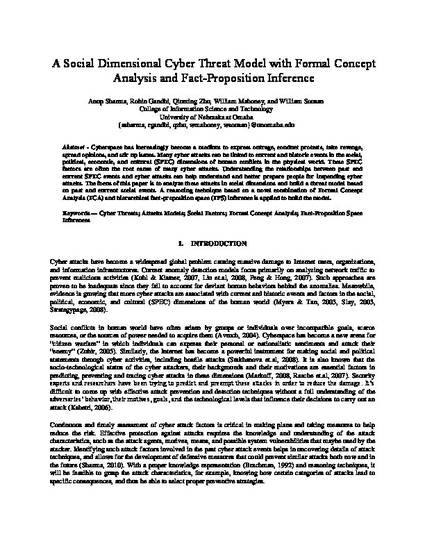
Cyberspace has increasingly become a medium to express outrage, conduct protests, take revenge, spread opinions, and stir up issues. Many cyber attacks can be linked to current and historic events in the social, political, economic, and cultural (SPEC) dimensions of human conflicts in the physical world. These SPEC factors are often the root cause of many cyber attacks. Understanding the relationships between past and current SPEC events and cyber attacks can help understand and better prepare people for impending cyber attacks. The focus of this paper is to analyze these attacks in social dimensions and build a threat model based on past and current social events. A reasoning technique based on a novel combination of Formal Concept Analysis (FCA) and hierarchical fact-proposition space (FPS) inference is applied to build the model.
Available at: http://works.bepress.com/qiuming-zhu/5/

This article was originally published as Sharma, R. Gandhi, Q. Zhu, W. Mahoney, and W. Sousan, “A Social Dimensional Cyber Threat Model with Formal Concept Analysis and Fact-Proposition Inference,“ The International Journal of Information and Computer Security, Volume 5, Number 4, pp. 301-333, 2013. at 10.1504/IJICS.2013.058213.